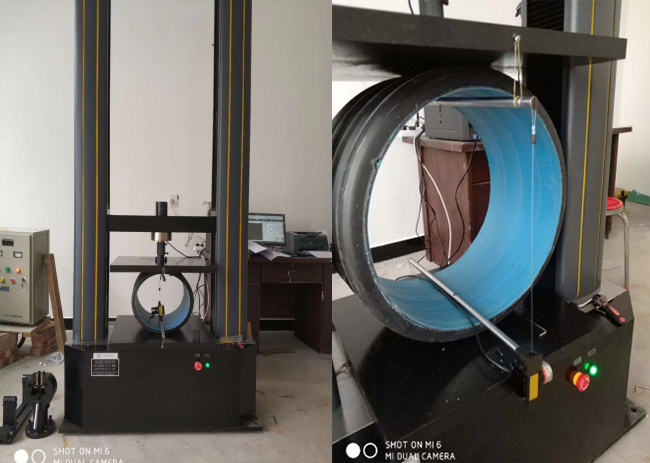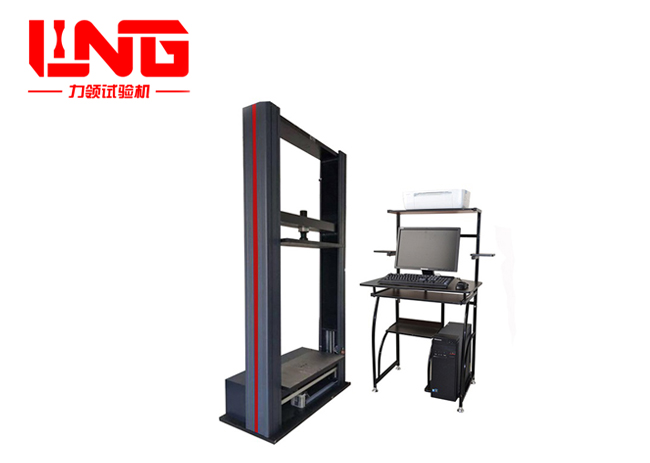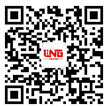Detailed discussion on ring stiffness testing machine

The ring stiffness testing machine is mainly divided into two categories: microcomputer controlled ring stiffness testing machine and digital display ring stiffness testing machine. It is widely used for the determination of ring stiffness of thermoplastic pipes with circular cross-section and fiberglass pipes, meeting the requirements of PE double arm corrugated pipes, corrugated pipes,Wrapped pipemeets the requirements of various pipe standards, and can complete tests such as pipe ring stiffness, ring flexibility, flatness, bending, and weld seam tension..
Adopting computer automatic control, real-time display of experimental data and curves, and external printer printing of experimental reports. Fully comply with the requirements of GB/T9647-2003 "Determination of Ring Stiffness of Thermoplastic Pipes".
How can we provide customers with a suitable ring stiffness testing machine now?
Step 1, select the force value
If the user specifies the force value they need to purchase, they can simply order the model. However, most users are still unsure of the tonnage they need, so this needs to be determined based on the material, inner and outer diameters of the pipe, ring stiffness, and relevant standards.
Step 2, select the model
1. Test space: The test of the ring stiffness testing machine is divided into two types: single space and double space. Single space refers to the same space for tension and compression, and the common one is usually the lower space. The dual space refers to the upper space and the lower space. The upper space is usually used to detect tensile testing machines, while the lower space is usually used to detect compression tests. Note: For experiments with a high travel distance, a single space structure is usually used, as the equipment is too high and installing attachments is more complicated. For experiments with a low travel distance, a dual space structure can be chosen. The two functions that can be achieved are consistent, and whether it is a single space or a dual space, it will not affect the experimental results. The test space also includes the test width, as the minimum width of the specimen is specified for pipes of different diameters during the ring stiffness test. For pipes with a diameter less than 1500mm, the width of the specimen should not be less than 300mm; For pipes with a diameter greater than 1500mm, the width of the specimen should be0.2times the diameter. For example, for pipes with a diameter1800mm, the width of the ring stiffness specimen should be at least360mm.
2. Test itinerary: It is determined based on the outer diameter of the pipe, that is, how much space is required for the cut pipe sample. The test space can be customized according to different pipes, ranging from 600mm to 3000mm.
3. Digital display or microcomputer control for testing machines: Common models include digital display and microcomputer control. The price of digital display is lower than that of microcomputer control, and the displayed data records are also fewer, with relatively lower scalability.
Step 3, select the configuration
The basic architecture of the ring stiffness testing machine is the same regardless of the configuration, which is composed of a host (including frame, base, transmission system), fixtures, deformation measurement system, software system, and electrical system. The fixed configuration we are referring to here refers to the following three types.
1. Choose the manufacturer of servo motors, force sensors, and encoders. Here, the manufacturers are generally classified as domestic or imported. Because brands in the market for things like accessories are already very clear
2. Should the selection of attachments for the ring stiffness test be a complete set (including tension, compression, etc.), or is it only used to test one or more of the tests.
3. Whether to choose other extension attachments, that is, to achieve ring stiffness testing and mechanical testing of other materials on one machine, such as adding attachments such as wood tension, compression, and shear to test the mechanical properties of wood.





